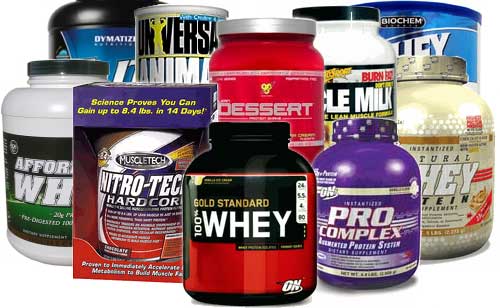Saturday, September 21, 2013
Sunday, September 15, 2013
Whey Protien
Whey is
a byproduct of cheese production. It is that pseudo-clear liquid remaining
after milk has been curdled and strained that used to be tossed aside as waste
material.
It has
an impressive array of proteins:
- Beta-lactoglobulin
- Alpha-lactalbumin
- Serum albumin
These
are complete proteins, comprised of the essential amino acids central to
protein synthesis and increased muscular hypertrophy. Our bodies can produce
non-essential amino acids from lesser amino acids, but we cannot produce the
essentials ourselves; we must consume quality protein sources. Whey is a
naturally occurring, essential protein that satisfies the body’s protein
requirements.
Composition and forms of whey
protein
Whey protein is an approximate mixture of the
following:
- Protein shake
- Whey protein milkshake
- 65 percent beta-lactoglobulin
- 25 percent alpha-lactalbumin
- 8 percent bovine serum albumin
- Immunoglobins
- There are three primary types of whey protein:
- Whey protein concentrate (WPC)
- Whey protein isolate (WPI)
- Whey protein hydrolysate (WPH)
The percentage of protein in WPC depends on
how concentrated it is. Lower end concentrates tend to have 30% protein and
higher end up to 90%.
Whey protein isolate - WPIs are further processed to remove all
the fat and lactose. As a result, WPI has a high percent of protein by weight,
generally over 90 percent.
Whey protein hydrolysate - WPH is considered to be the "predigested"
form of whey protein as it is already undergone partial hydrolysis - a process
necessary for the body to absorb protein.
As a result WPH doesn't require as much
digestion as the other two forms of whey protein. In addition, WPH
substantially increases insulin, providing more power for your muscles.
Muscle building with whey protein
Whey protein supplementation significantly
improves muscle protein synthesis and promotes the growth of lean tissue mass. Whey
protein supplementation during resistance training offers some benefit compared
to resistance training alone. Much better gains in strength are associated with
whey isolate supplementation compared to casein.
Whey protein contains all of the essential
amino acids and also serves as a possible alternative to milk for people who
are lactose intolerant.
In addition to being used as an alternative
to milk and as a popular dietary supplement to improve strength.
Health benefits of whey protein
There are many benefits associated with the
consumption of whey protein, and researchers are constantly finding new
possible therapeutic properties. Whey protein is believed to have a range of
therapeutic properties that could help treat, as well as reduce the risk of
certain diseases.
Research has found that whey protein has
anti-cancer and anti-inflammatory properties, and could possibly act as an
effective supplementary treatment for diabetes and heart disease. It has also
been found to help decrease weight loss among people suffering from HIV (AIDS).
The possible health benefits of consuming
whey protein include:
Losing weight - People who took a specialized whey fraction lost significantly
more body fat and showed a greater preservation of lean muscle compared to
subjects consuming the control beverage.
Anti-cancer properties - The use of whey protein concentrate and glutathione modulation
in cancer treatment have promising results.
High cholesterol - A significant decrease in total cholesterol and LDL cholesterol
at week 12 in the whey group compared with the casein.
Asthma
- whey protein could improve immune response in children with asthma.
Lowering blood pressure and reducing risk of cardiovascular disease - Beverages
that were supplemented with whey protein significantly reduced elevated blood
pressure, and reduced the risk of stroke and heart disease.
Side effects
Some people who are allergic to milk may be
specifically allergic to whey. If anybody is allergic to milk, there is a
possibility to be allergic for whey protein. In moderate doses of whey protein
doesn't generally cause any adverse events.

Consuming severely high doses can cause:
- Stomach pains
- Cramps
- Reduced appetite
- Nausea
- Headache
- Fatigue
How is whey protein produced?
When milk is left over and coagulates, it
eventually turns into a 5% solution of lactose in water, loaded with minerals.
This left over by-product, called whey, makes
up 20% of the protein in milk; the other 80% is called casein.
The liquid whey is separated from the casein
and sent through filters to remove all non-whey ingredients. It is then
purified in a process called "ion exchange".
Subscribe to:
Comments (Atom)








